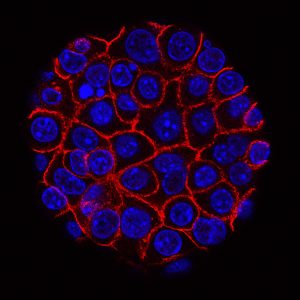
NICE recommends Daiichi’s Lixiana for blood clots
pharmafile | July 13, 2015 | News story | Sales and Marketing | DVT, Daiichi, Daiichi Sankyo, Lixiana, NICE, NOACs, VTE, anticoagulant, blood clots, edoxaban, novel anticoagulant. PE
Daiichi Sankyo has won a speedy approval from NICE, after the NHS guidance body approved its newly-launched blood clotting drug Lixiana as a treatment for clots in the legs and lungs.
The NICE decision comes just days after Daiichi launched Lixiana (edoxaban) in the UK, and shortly after the Japanese firm earned European approval for the prevention and treatment of deep vein thrombosis (DVT) and pulmonary embolism (PE) in adults and the prevention of stroke and clots in adults with non-valvular atrial fibrillation (NVAF) and other risk factors.
The NICE committee say the consequences of blood clots can be ‘devastating’, and figures from NICE estimate there are around 83,500 new cases of blood clots, (also called venous thromboembolism or VTE) each year in England – or one in 500 people.
The draft guidance states: “Edoxaban is recommended as an option for treating and preventing recurrent deep vein thrombosis and pulmonary embolism in adults. The Committee concluded that edoxaban could be recommended as a cost-effective use of NHS resources.”
The cost savings from Lixiana, and the other newer anticoagulants in its class, come from the fact that there is no need to monitor patients with regular blood tests, as is the case with treatment with warfarin. This was noted by the appraisal committee in its review.
“The Committee considered the experience of people with VTE. It noted submissions from clinical and patient experts which stated that the impact of a deep vein thrombosis or pulmonary embolism can be devastating, with patients often hospitalised, restricted in movement and unable to continue with previous activities. When recovering from VTE, patients may need further treatment and monitoring.
“It heard from the patient and clinical experts that the need for checks when taking warfarin represents a major disadvantage, and the most important issue for patients is to have an effective treatment which minimises disruption to their day-to-day lives.”
Dr Alexander Cohen, consultant vascular physician at Guy’s and St Thomas’ Hospitals in London, says doctors need ‘more tools’ to treat the condition, and adds Lixiana “will be of great use to doctors to help tailor treatments to specific patients.”
Dr Simon Clough, UK general manager for Daiichi Sankyo, says: “We are very pleased to be able to offer patients and doctors in England and Wales a new alternative in the treatment armoury against VTE. It is gratifying that NICE has found our therapy to be clinically effective and cost effective within just weeks from receiving our European authorisation.”
He adds: “NICE has recognised an unmet clinical need among patients with VTE, and this recommendation confirms the value of edoxaban, which combines convenience and safety with features that patients and physicians appreciate.”
Lilian Anekwe
Related Content

NICE recommends migraine treatment for NHS use
The National Institute for Health and Care Excellence (NICE) has shared draft guidance recommending AbbVie’s …

FDA accepts BLA for AstraZeneca and Daiichi Sankyo’s datopotamab deruxtecan for breast cancer treatment
AstraZeneca and Daiichi Sankyo have announced that their Biologics License Application (BLA) for datopotamab deruxtecan …

GSK’s Jemperli recommended by NICE for endometrial cancer treatment
GSK has announced that the National Institute for Health and Care Excellence (NICE) has recommended …








